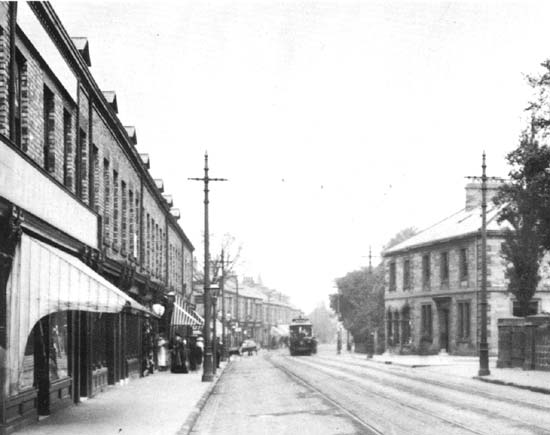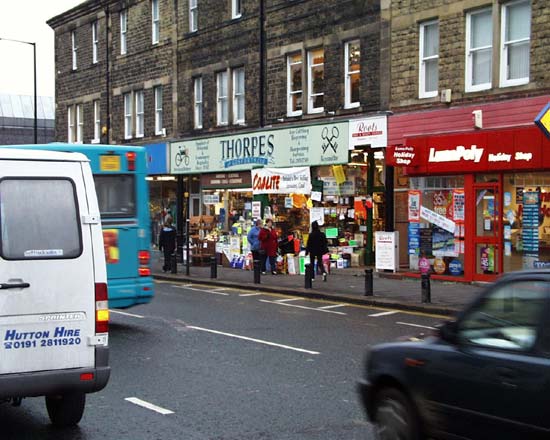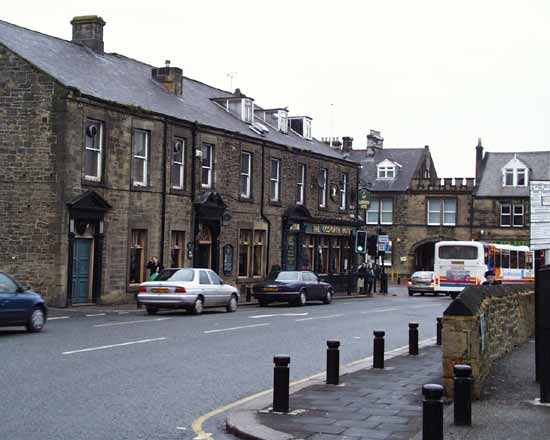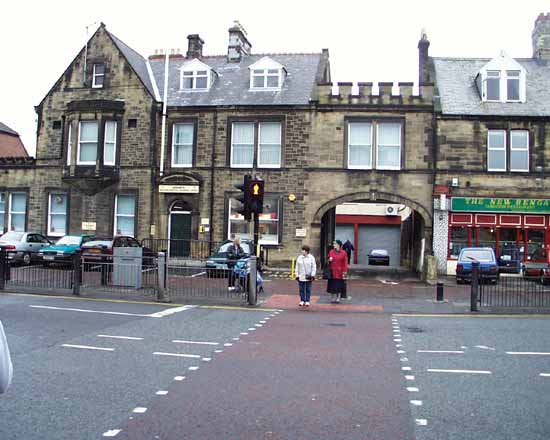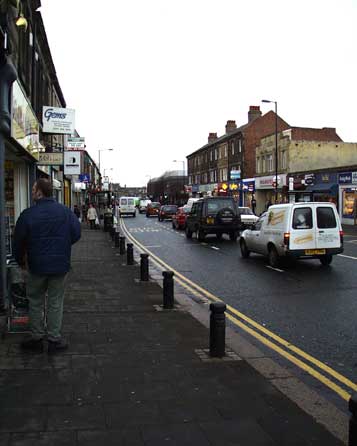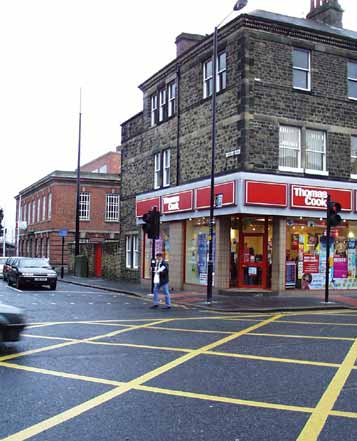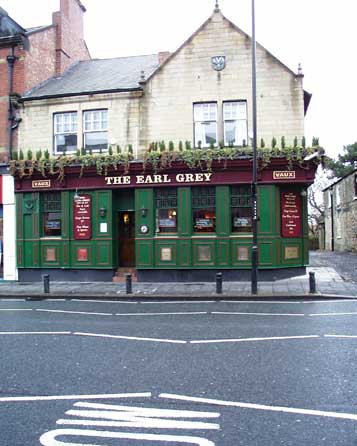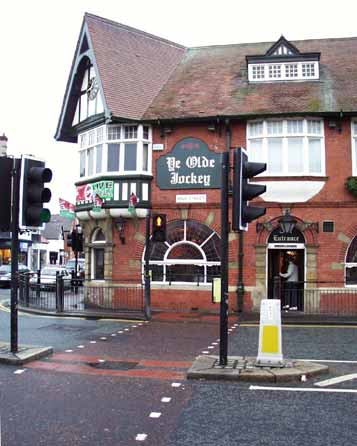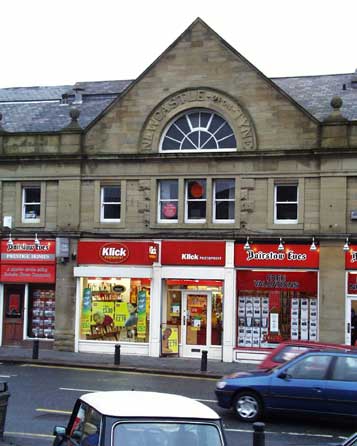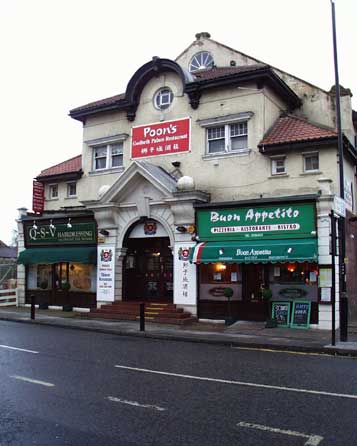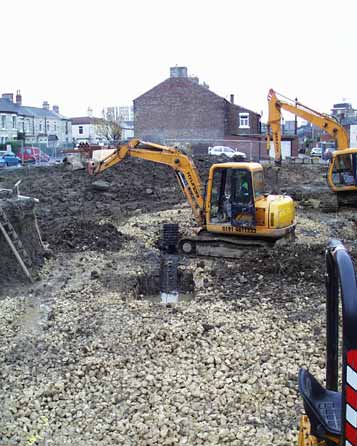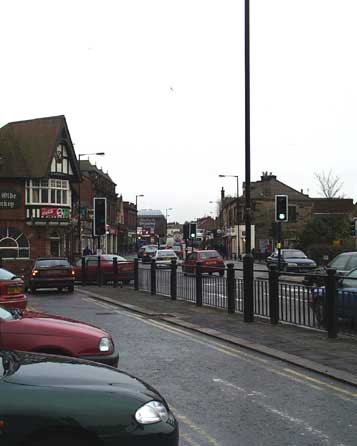|
Gosforth
Sat. 25th Nov., 2000
|
 |
 |
|
North of the city, beyond the Town Moor and Jesmond, lies the suburb of Gosforth. Until April 1974 and the Local Government
shuffle Gosforth was a separate town with its own council and Town Hall.It was until then in the County of Northumberland, Newcastle being a city borough. After the Local Government Act the new county of
Tyne and Wear was created and encompassed this area. The County public house reflects the previously proudly held county allegiance. The change to the new county, and the absorption into Newcastle was
fiercely opposed by many locals. |
|
|
|
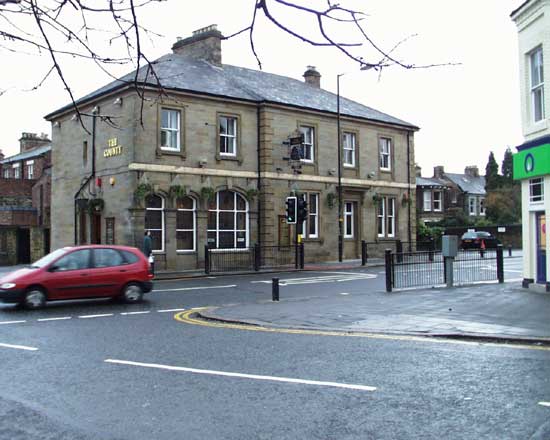 |
 |
|
The building has been listed as being of historical importance since 1987, but its life started as a private dwelling in 1826 for the
then notorious Bulman family. They were land owners and some say extortioners; all agree that they were feared in this area. In 1866 the building was converted into a pub with four bars by its new owner James Stark. He
sold out to James Deucher in 1881, and that owner went on to become a successful brewer and pub developer with houses in Glasgow, Melrose, and the Newcastle area. |
|
|
 |
 |
|
Gosforth's name derives from "Goose Ford" and refers to an incident that happened when the Romans arrived here in
55AD. The local people used to breed geese on the nearby river Ouseburn and the soldiers seized them all for their pot at the point about 1km north of here where the road crosses the river.The High Street
was until recently part of the trunk route A1 stretching from London to Edinburgh. Since 1988 the main road has by-passed the west and north of the city, and the High Street is now a local route. In 1902
Gosforth was linked by tramway to the eastern town of Wallsend, and to Newcastle in the following year. The 1903 view below shows little has changed. |
|
 |
|
Thorpe's store has been a fixture here for years. It is the sort of hardware store where you can get almost anything. People flock here
from all parts of Newcastle for those hard to find or somewhat older plumbing or building hardware parts. |
|
|
 |
 |
|
Most of the High Street buildings date from that latter part of the 19th century. Here is the junction of St. Nicholas
Avenue, and the now empty 1920s Post Office building adjoins the telephone exchange. Until 1983, and the Tory privatisation, the telephone system and the Post Office were combined and part of the government.
They now plough separate furrows.At the far end of the street is the entrance to Gosforth Central Park, and oasis of tranquility amid the commercial bustle. The new Gosforth Shopping Centre was erected
during the late 1980s and can be a pleasant gust of shelter and warmth on a cold day like today. |
|
 |
|
There are two Victorian church buildings on the High Street, Trinity where preparations were underway for a wedding. This is
surely the triumph of hope over experience!The second is the United Reformed Church, recently acquired by its neighbour. So now we can have double the weddings! |
|
|
|
|
 |
 |
|
A little further north is the Brandling Arms, somewhat spoilt by its breeze block extension to the frontage. Earl Grey,
Prime Minister
from 1830 to 1834 and a champion of Parliamentary reform, is again remebered here. Vaux is the main brewery in Sunderland, closed down in 1989. Its property division was taken over by an hotel chain.
|
|
|
|
 |
 |
|
Next north is Ye Olde Jockey, an allusion to the nearby racetrack at Gosforth Park. Until nine months ago this was the Queen
Victoria, but fell victim to the unfathomable desire for hostelers to change long established and meaningful names for their houses.This building dates from 1910 and is typical of the just pre First World
War provincial architecture, with suggestions of Tudor half timbered walls, gables and dormers. Those semi-circular window and door arches with multiple keystones are a signature of this vintage, harking
back further to the Norman arch. |
|
 |
|
The Newcastle Co-operative Society came to Gosforth during the first decade of last century. The Co-op
movement was born in Rochdale in 1844 and held as its aim the provision of food and provisions at a fair price with the profits going to its shareholders, the customers.Then, as now, shoppers share in
the dividend created by profitable trading. there are no grand owners and no profiteering. The co-op also provided facilities for enjoyment as most town used to have a
Co-op
hall, used for dances and festive occasions. This purpose built building offered the whole gamut of Co-op fare from cheese to chairs and beyond to the residents of Gosforth until its closure during the 1970s.
|
|
|
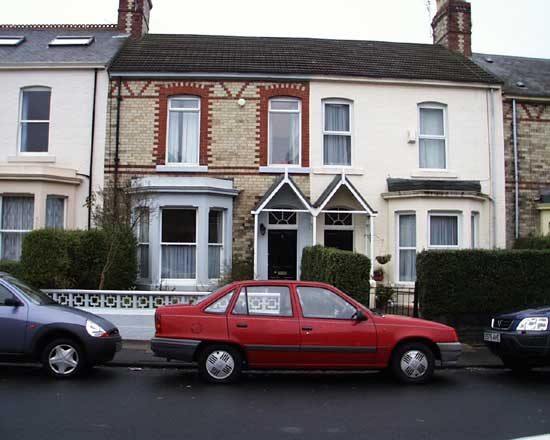 |
 |
|
The housing stock in the area bordering the High Street is predictable. These compact town terraces are ornate and practical. Today's
owners seem intent on removing the character of the patterned brickwork. It defies logic and tase. The centre property retains its original look despite the replacement upper storey windows; no rattling draughty sashes
here! |
 |
|
Here Salter's Road leads to the High Street opposite the old Fire Station. The Gosforth Hotel on the corner hosted folk music meetings
and jazz evenings until quite recently. |
 |
|
The Globe cinema and later Bingo Hall has given way to this gigantic Chinese restaurant. For many years an illuminated world
protruded on a stalk where that red sign now sits. The neon tubes spelt the word GLOBE and were tilted so as to be clearly visible from the High Street.Just visible on the extreme left is the site of the
Globe Garage, now being developed as a residential apartment block. Below you can see the excavations for the underground car parking space. |
|
|
|
|
 |
 |
|
Just visible in the distance is the new office development at Regent Centre.The gable end of the terrace demonstrates the
depth of these relatively narrow dwellings and the offshoot, containing the bathrooms and toilets. Below is the old Fire Station. That archway would permit only the most compact of modern appliances and it
was abandoned during the 1980s. it is now part of the Local Government Housing Office. |
|
|
|
 |
 |
|
This view looking south from the Fire Station shows the busy Church Road junction.Beyond is the sedate High Street, now
thanks to that Superhighway by-pass to the west, safe to remain human sized. The next step would be some way of reducing the motor traffic further so as to make the place a bit more pedestrian friendly.
|
|
|
 |
|
|
 |
|
If you should arrive here via a search, or be missing the navigation on the left hand side, click this button.
|
|


